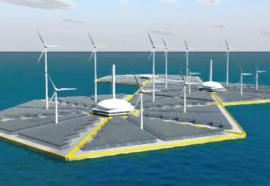Capturing Ocean Heat
Ocean thermal energy conversion offers a timely renewable alternative.
23 million square miles of tropical oceans daily absorb solar radiation equal in heat content to about 250 billion barrels of oil. Ocean thermal energy conversion technologies convert this solar radiation into electrical power by exploiting the thermal gradient temperature differences between the surface and the depths. This enormous resource merits a closer look as policy makers consider alternative technologies for serving future energy demands.











